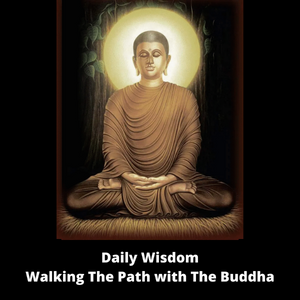

We think that Buddhism arrived in Thailand around 800-1200 years ago, around 800-1200 CE.
Based on research, we think that Buddhism traveled from Sri Lanka into Thailand over the sea. When Buddhism arrived here, they did not wipe out everything that had been doing and then replace it with a clean transmission of Buddhist Teachings, instead, they merged it all together.
The Thai people were already practicing various folk traditions such as animism, which is the worship of inanimate objects. This is why you see the wrapping of trees, and worshiping the water or mountain spirits. While it is lovely to think about respecting and honoring things like the earth, water, mountains, trees, etc. this is not what would lead to Enlightenment nor what was taught by The Buddha. Nonetheless, being new to Buddhism, the Thai people would not have known that and they just merged everything together.
So, it is not like Buddhism came in on a Friday, and there was a country-wide announcement stating, forget everything that you have been doing for the last many generations and that you learned from your ancestors, and on Monday we are going to be up and running on Buddhism. That is not how it happened, instead, they just merged everything together.
What you are seeing here is the merging of Buddhism and Thai astrology. I will explain to you what this is, but just understand, this has nothing to do with The Teachings of The Buddha. But, you might be curious to know what this is, and I will explain it to you.
The Thai people think that there is a Buddha statue designated for each day of the week. And, depending which day you were born, there is a Buddha statue that is designated for your day of the week. People are taught to pay extra special attention and respect towards that Buddha statue and that it will bring you good luck.
The Buddha did not teach that there is good luck nor bad luck. He taught you to cultivate wisdom and make wise decisions, then that is what will produce wholesome results (i.e. wholesome Kamma) in one’s own life. If you make unwise decisions, then it will produce unwholesome results (i.e. unwholesome Kamma).
The Natural Law of Kamma is “cause and effect” or “action and results”, it is “the results of your decisions”. It is not anything mystical or magical, about punishments and rewards, nor who is to blame or at fault.
The Natural Law of Kamma is the results of decisions that you make, a sequence of events that lead to a certain result.
It is Your Life -> Your Decisions -> Your Results.
The Buddha also did not teach to make statues of him, that there is a Buddha statue designated for your day of birth, nor to pay extra special attention to any specific statue. This is not what he taught.
He taught to train the mind but, people oftentimes believe in these things, and is why you see them. But, more and more people are understanding that these things are not the true Teachings of The Buddha, and is why you see this is pushed back into this corner, with less and less people paying attention to it.
If you notice, there are eight (8) Buddha statues but, there are seven (7) days of the week. That is because, in Thai astrology, Wednesday is a very complicated day, and there is a morning statue and an evening statue, based on the time of one’s birth.
So again, this is not what was taught by The Buddha and you do not need to know this to attain Enlightenment but, if you see this sort of thing at a Temple, you will know what it is.